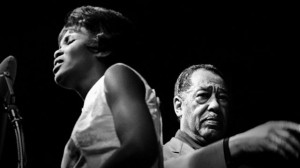Just about every discussion about jazz in San Francisco mentions, if not mourns, the displacement of jazz clubs from San Francisco’s Fillmore District and rightly so. But vocalist Mary Stallings, whose career began in clubs like The Blue Mirror, which is no longer open, said in a recent Forum interview that looking back is not the way forward.
“What is behind us is behind us,” said Stallings. “I feel that we can try to duplicate a little of [the old scene], but it will never be that because you don’t have that kind of heart…” Stallings experienced that heart firsthand, both as a child growing up in San Francisco and as a young musician: “The church that my family attended was across Fillmore, just a block across Fillmore at Geary and Webster. So, walking to church on Sunday, it was exciting. Because all of the clubs, you could just see all the guys and all the ladies that had been enjoying the nights. And the music was still flowing everywhere. [On] those two blocks we had to walk, there was about three clubs. The energy of it was amazing.”
It was those same San Francisco clubs, particularly the Black Hawk, that introduced Stallings to jazz greats like Dizzy Gillespie and Cal Tjader. “At those little sessions at the Black Hawk, [Gillespie] brought me out of the audience, I guess prompted by some of the fans… So I jammed with him. And then any time he’d come to town, it was like a standard thing.”
During her career Stallings achieved success, touring with the likes of Count Basie and Ella Fitzergerald and recording numerous albums. But she found herself pulled away by the call of family and other interests, such as fashion design. “Sometimes, you get burnt out of things,” reflected Stallings. “I had been traveling a lot in those years, and on my own. For me, it came to a place in life where you think that you really want to just do something else. I wanted to try to make my family, to be there for my family, to enrich my life.”
While Stallings hints that perhaps her singing career would have been higher profile had she not taken the break, she showed no signs of regret: “What you see today is a woman who feels accomplished about herself — doesn’t have the star — but she feels very comfortable within herself… I’ve lived the things that I was predestined to live. I was supposed to be a mother, I was supposed to be a wife.”


